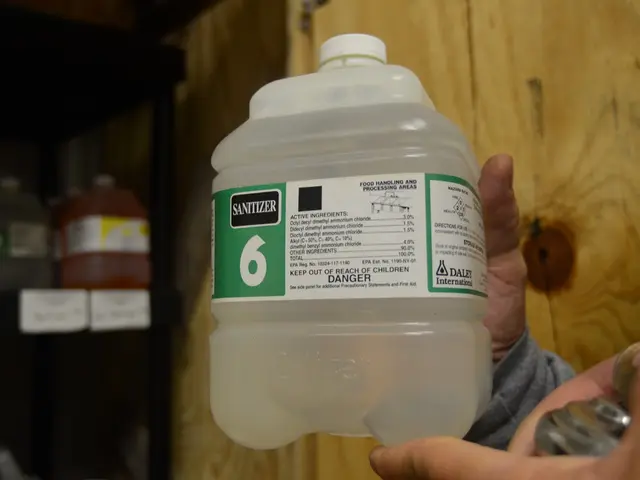Cervical Screening Exam: Understanding the Procedure, Its Process, and Outcomes
Cervical cancer, a type of cancer that develops in the cells of the lower part of the uterus (the cervix), is a concern for many women. Fortunately, early diagnosis and effective treatment are possible thanks to routine cervical cancer screening, which primarily involves two tests: the Pap smear and the human papillomavirus (HPV) test.
The cervix, which connects the uterus to the vagina, is composed of two parts: the endocervix and the ectocervix. The ectocervix, the outer part, contains squamous cells, which resemble fish scales under the microscope. The endocervix, on the other hand, contains tall, column-like cells responsible for mucus secretion.
A doctor usually performs a Pap smear during a gynecological pelvic exam, inserting a speculum into the vagina to examine the cervix and taking a sample of cervical cells using a brush or spatula. The Pap smear is a screening tool used to detect abnormal cells and cancer by sampling cells from the cervix.
The HPV test, on the other hand, detects DNA from HPV to reveal its presence and type. HPV is a common sexually transmitted infection that can lead to cervical cancer in some cases, and the risk of cancer increases if HPV becomes a long-term infection.
Recommendations on Pap smear frequency depend on several factors, including age, medical history, exposure to diethylstilbestrol (DES) when in the womb, HIV status, and whether or not the person has a weakened immune system. Routine screening may not always include both tests at the same time, but a person can ask for an HPV test at the same time as a Pap smear.
For women aged 21-29, a Pap smear alone every three years is recommended. Women aged 30-65 have several screening options: a Pap smear every three years, an HPV test every five years, or a Pap and HPV co-test every five years. After the age of 65, most women will not need a Pap smear or HPV test, but each person's risk factors vary.
Abnormal Pap smear results may require additional tests, such as a colposcopy or biopsy. Unclear Pap smear results may require additional tests to monitor for changes. Squamous intraepithelial lesions indicate possible precancerous cellular changes that are likely to need further testing. Atypical squamous cells of undetermined significance (ASCUS) are mildly abnormal cells that do not meet the criteria for precancerous cells. Squamous cell cancer or adenocarcinoma indicates the likelihood of cancer, depending on the type of cell that is atypical.
It is best to avoid having a Pap smear during a menstrual period, especially if the flow is heavy, but it is still better to attend than not. Women should not douche or put anything in the vagina to clean it before the test.
Cervical cancer screening is vital for early diagnosis and effective treatment. High-grade lesions have a high likelihood of becoming cancerous sooner rather than later, while low-grade lesions have a minimal risk of imminently progressing to cancer.
In 2019, the ACS estimates approximately 14,000 new diagnoses of invasive cervical cancer in the United States and approximately 4,250 deaths. Deaths from cervical cancer have dramatically decreased after the introduction of the Pap smear.
The CDC recommends the HPV vaccination for men and women aged 27-45 years. After a total hysterectomy, a Pap smear will no longer be necessary, but those who have had cancerous or precancerous cells should continue to have regular tests. Those who have had abnormal test results in the past and those who are sexually active with more than one partner may need more frequent testing.
In conclusion, understanding cervical cancer screening is crucial for maintaining women's health. Regular Pap smears and HPV tests can help detect abnormalities early, leading to effective treatment and a reduced risk of cervical cancer. Always consult with a healthcare professional for personalised advice on screening frequency and any concerns regarding cervical health.
- Cervical cancer, a cancer that develops in the cells of the lower part of the uterus (the cervix), can be a concern for many women.
- Early diagnosis and effective treatment of cervical cancer are possible thanks to routine cervical cancer screening, which primarily involves two tests: the Pap smear and the human papillomavirus (HPV) test.
- HPV, a common sexually transmitted infection, can lead to cervical cancer in some cases, and the risk of cancer increases if HPV becomes a long-term infection.
- Routine screening for cervical cancer may not always include both the Pap smear and HPV test at the same time, but a person can ask for an HPV test at the same time as a Pap smear.
- For women aged 21-29, a Pap smear every three years is recommended, while women aged 30-65 have several screening options.
- Squamous intraepithelial lesions indicate possible precancerous cellular changes that are likely to need further testing, and Squamous cell cancer or adenocarcinoma indicates the likelihood of cancer.
- Cervical cancer screening is vital for early diagnosis and effective treatment, and those who have had cancerous or precancerous cells should continue to have regular tests.
- The CDC recommends the HPV vaccination for men and women aged 27-45 years, and those who have had a total hysterectomy will no longer need a Pap smear, but continued testing may be necessary for those with a history of abnormal test results or multiple sexual partners.








